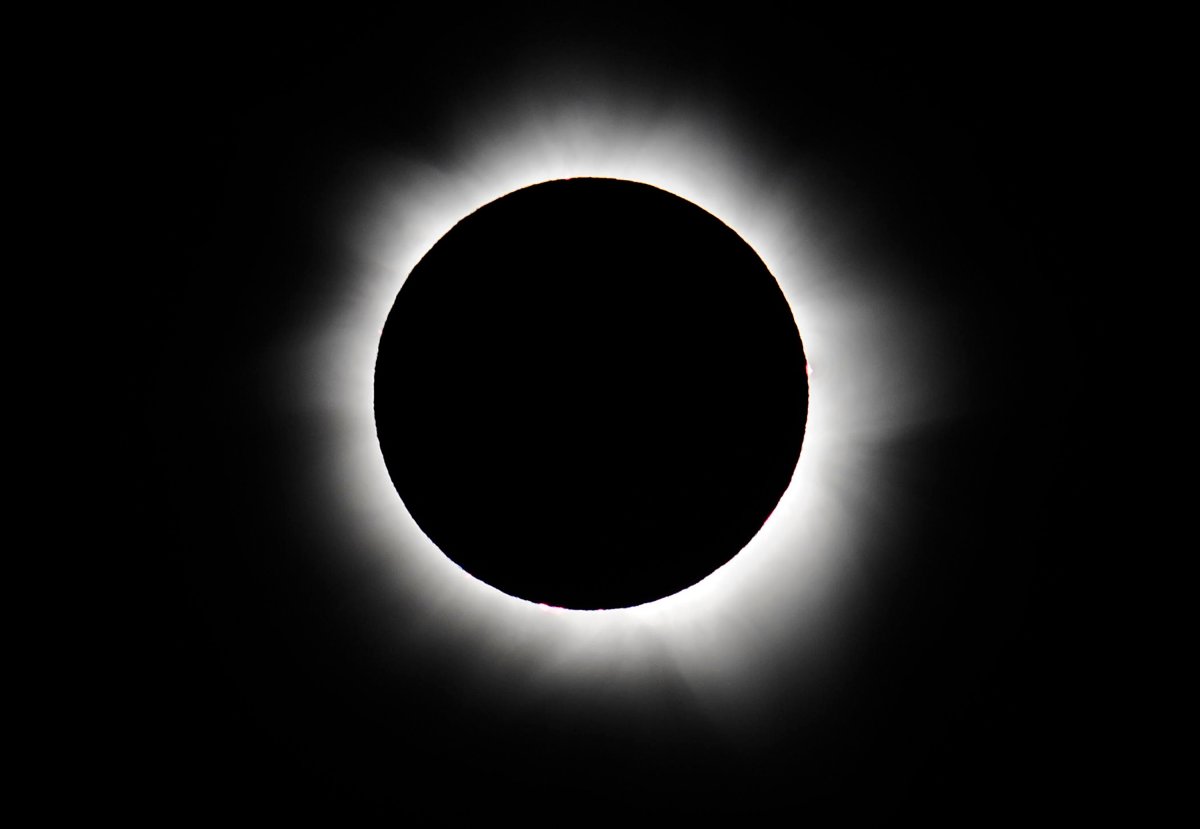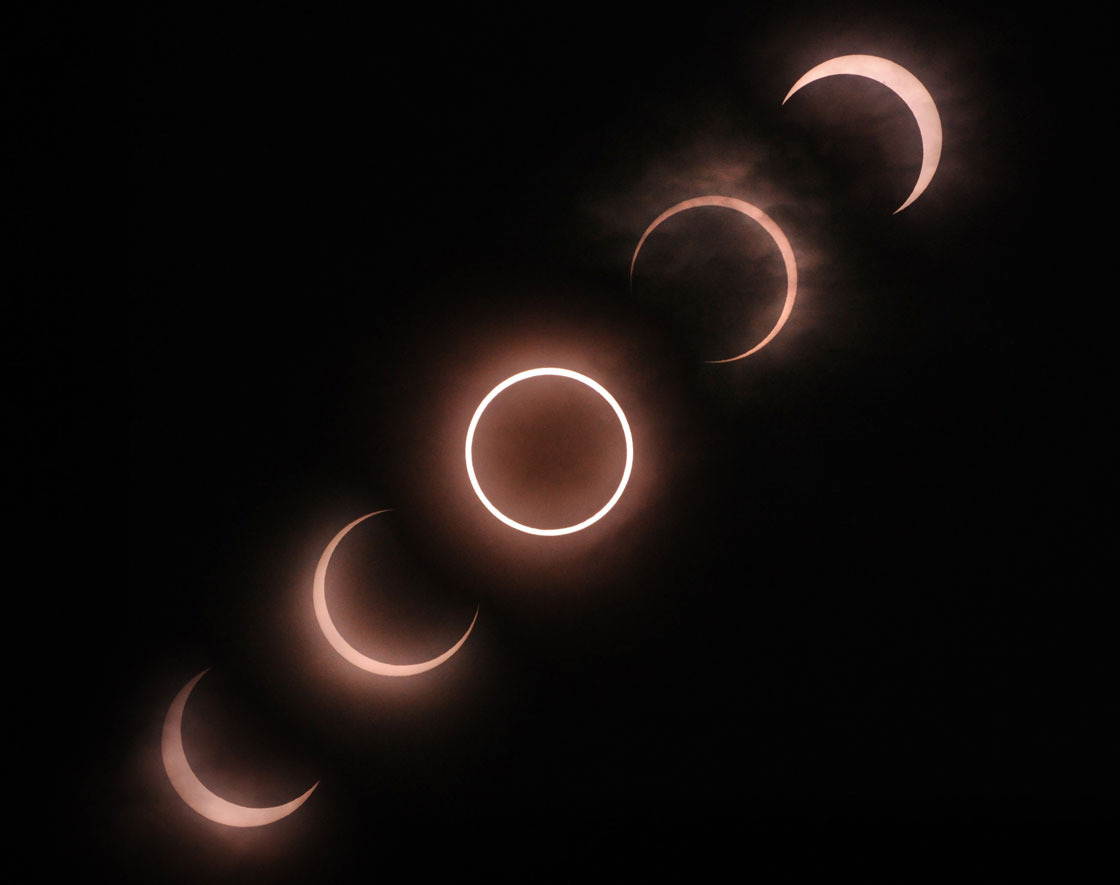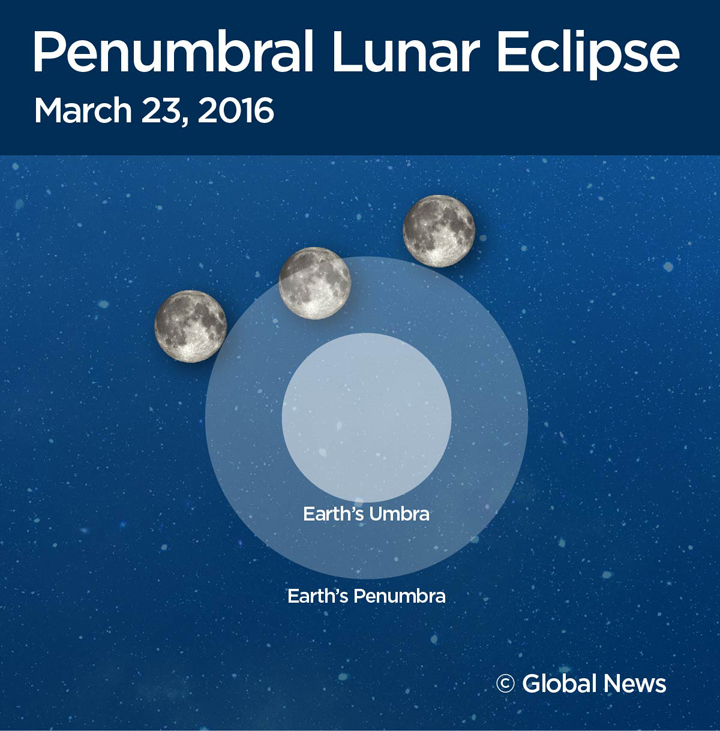Most people are fascinated with the world beyond our own, particularly things that they can enjoy for themselves.

So we’ve decided to do a monthly look ahead where you can find out what interesting celestial events — eclipses, meteor showers, planetary conjunctions and more — you can see for yourselves.
MARCH 2016
Though most months we’re treated to a meteor shower, March is the rare month that we don’t see a major one. That’s not to say that you won’t see a meteor or two — it’s just won’t be associated with any debris left over from a comet.
But there are a few events this month that, even if you can’t step outside and see on your own, you can see in other ways.
March 9: Total solar eclipse
2014 was a great eclipse year for Canada. From coast to coast, we were able to enjoy a partial solar eclipse and a total of four lunar eclipses. This year, unfortunately, we won’t be in such a great position. However, that doesn’t mean you’ll miss out.
On March 9 there will be a total solar eclipse across parts of Indonesia and the South Pacific. The point of greatest eclipse will be in the middle of the Pacific Ocean, but several places in the Indonesian islands will have a fantastic view.
If you want to watch it (remember it takes more than four hours for a solar eclipse) you can watch it live on Slooh or The Virtual Telescope Project.
March 19/20: Vernal equinox
Ah, Spring. It’s right around the corner.
The vernal equinox marks the start of spring in the northern hemisphere. While technically vernal equinox occurs at 4:30 GMT, it will actually be March 19 in some parts of the country.
READ MORE: The science behind fall and the autumnal equinox
The vernal equinox occurs when the sun crosses the celestial equator — an imaginary circle that divides our sky into the northern and southern hemispheres — moves from south to north.
While you won’t be able to see it occurring, you’ll certainly be able to notice, as the daylight hours will become visibly longer. And, of course, you’ll notice the change in season as the weather begins to warm up and those sure signs of spring start appearing.
March 23: Penumbral eclipse
Eclipses, whether they are solar or lunar, are a lot of fun to watch. And the great thing is, they take place over hours, meaning you don’t have to necessarily rush out to catch them.
Though 2014 was a fantastic year for lunar eclipses in Canada, this year we’re in a bit of an eclipse drought. However, parts of Asia, Australia, the Pacific Ocean and western South America will be treated to a penumbral lunar eclipse on March 23.
Earth has two shadows: a penumbra and an umbra. The penumbra is the outer, weaker shadow. Unfortunately, because of that, one might not even notice the moon dim. But if you have a keen eye, you might.
Though not visible here from Canada, check in with Slooh or The Virtual Telescope Project for a possible live feed.
March 29: Saturn, Moon, Mars, Antares
If you get the chance, you’ll definitely have to step outside in the early hours of March 29.
Around 12:30 a.m. look to the east for a great sight: The moon — which will be 72 per cent illuminated — will share the sky with Saturn and Mars as well as bright star in Scorpius, Antares.
Mars, while dim, is easily visible as the reddish “star” in the sky. But don’t be fooled: Antares is also red. Antares is a red supergiant, a star at the end of its life. Once it runs out of fuel to burn, it will collapse and then eventually explode in as a brilliant supernova.
Saturn will be the brightest object at around the 7 o’clock position beneath the moon.
Stay tuned for what you should be watching in the sky in April.








Comments